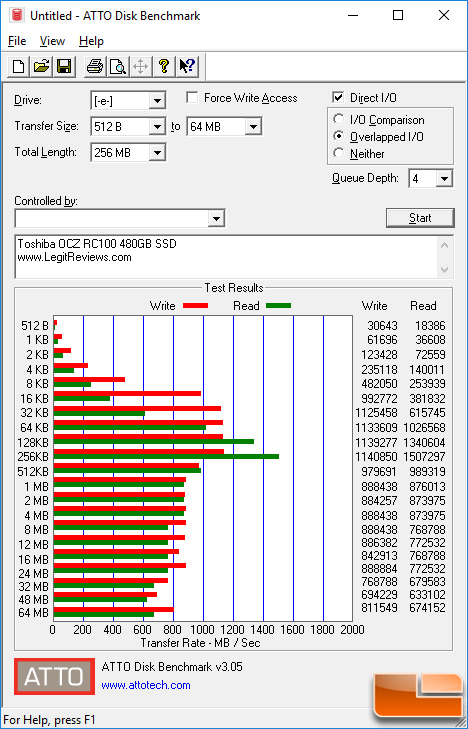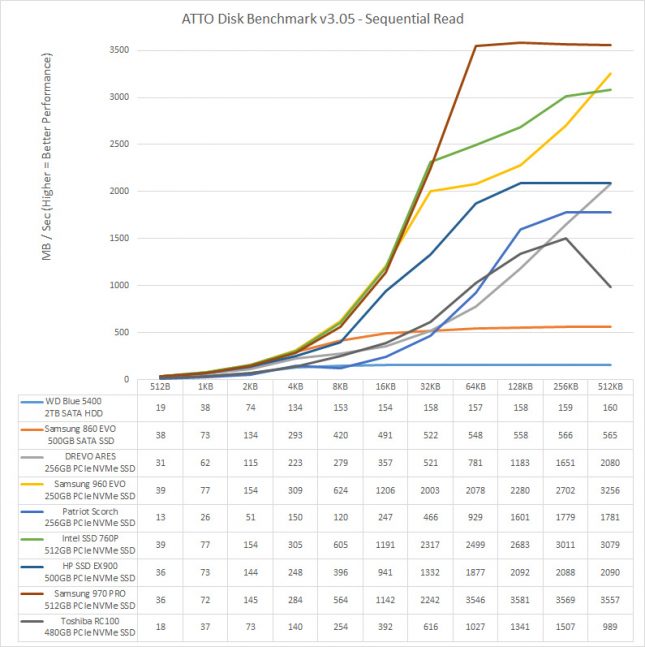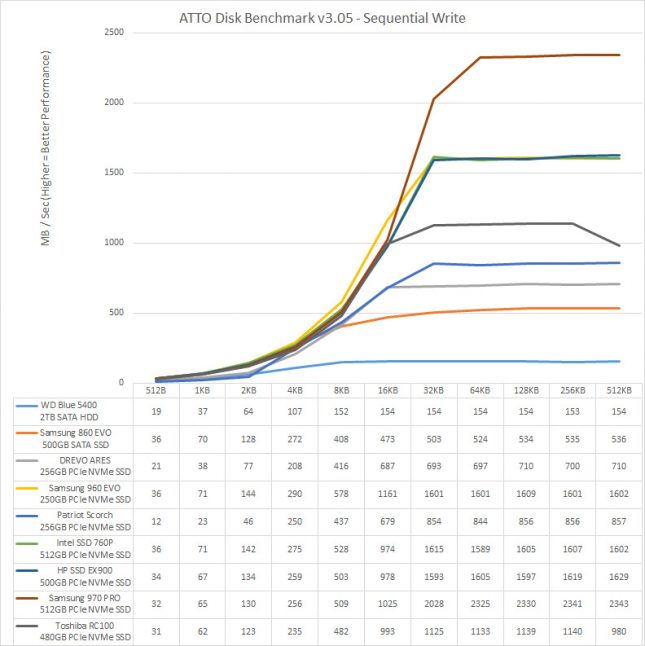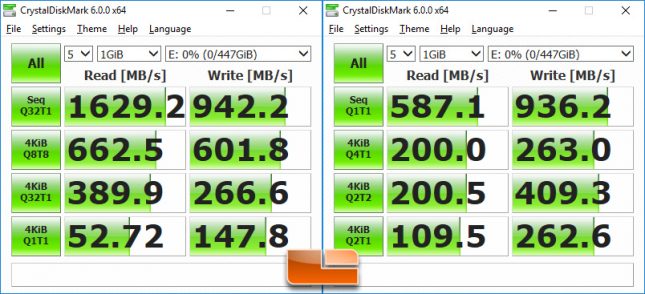Toshiba OCZ RC100 SSD Review – M.2 2242 PCIe NVMe
ATTO & CrystalDiskMark
ATTO v3.05
ATTO is one of the oldest drive benchmarks still being used today and is still very relevant in the SSD world. ATTO measures transfers across a specific volume length. It measures raw transfer rates for both reads and writes and places the data into graphs that can be very easily interpreted. The test was run with the default runs of 0.5KB through 64MB transfer sizes with the total length being 256MB.
ATTO – Toshiba OCZ RC100 M.2 480GB:
Benchmark Results: ATTO showed the Toshiba OCZ RC100 480GB M.2 PCIe NVMe drive reaching speeds of up to 1507MB/s read and 1141 MB/s write in the standard overlapped I/O benchmark. The benchmark results for this test were a little strange as write speeds were faster than reads most the time and the drives best performance came at the 256KB transfer size.
Benchmark Results: Compared to some other SATA III and PCIe NVMe SSDs, the Toshiba OCZ RC100 480GB drives performance was lower than we expected as we couldn’t hit the drives rated speed of 1600 MB/s.
Benchmark Results: The ATTO write peroformance numbers were better than we expected and the RC100 480GB drive did great up to 256KB and then performance suddenly started to drop off for unknown reason.
CrystalDiskMark 6.0.0 x64
CrystalDiskMark is a small benchmark utility for drives and enables rapid measurement of sequential and random read/write speeds. Note that CDM only supports Native Command Queuing (NCQ) with a queue depth of 32 (as noted) and shows the highest score of five runs.
CystalDiskmark – Toshiba RC100 480GB:
Benchmark Results: The Toshiba OCZ RC100 480GB drive topped out at 1629 MB/s read and 942 MB/s write in the standard sequential write test that is done at QD32. Random 4K QD1 performance was 53 MB/s read and 148 MB/s write. Those 4K random performance numbers improved up to 110 MB/s read and 263 MB/s write at a queue depth of 2. We also ran Random 4K numbers are a queue depth of 2 with two threads and then again at 4 with one worker for those that would like to see more data from the most important queue depth levels.
Let’s look at some other benchmarks!




